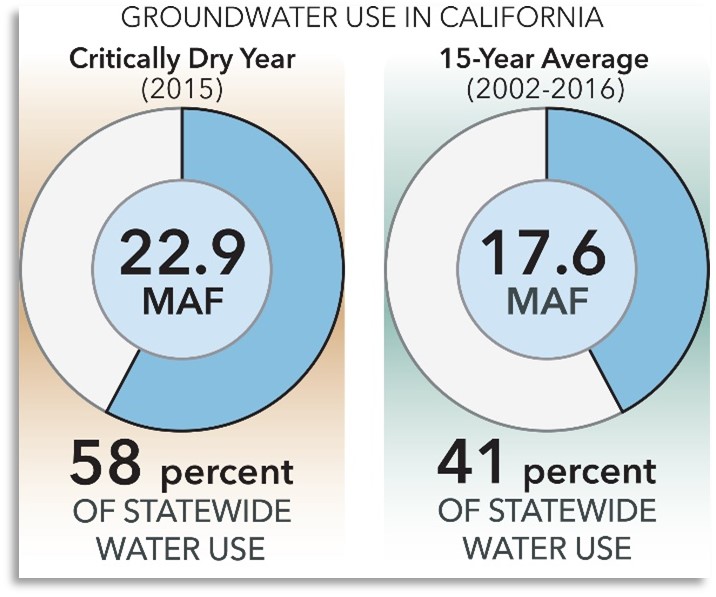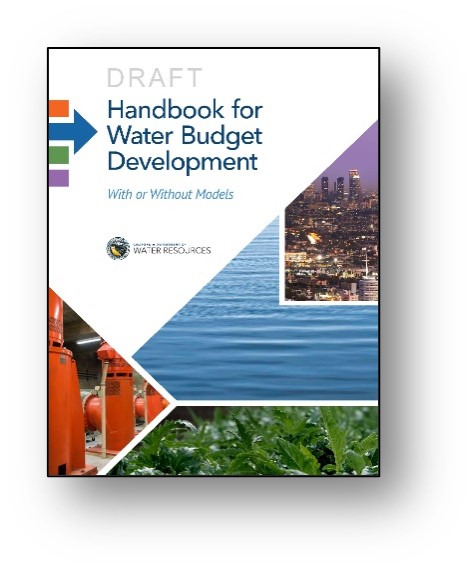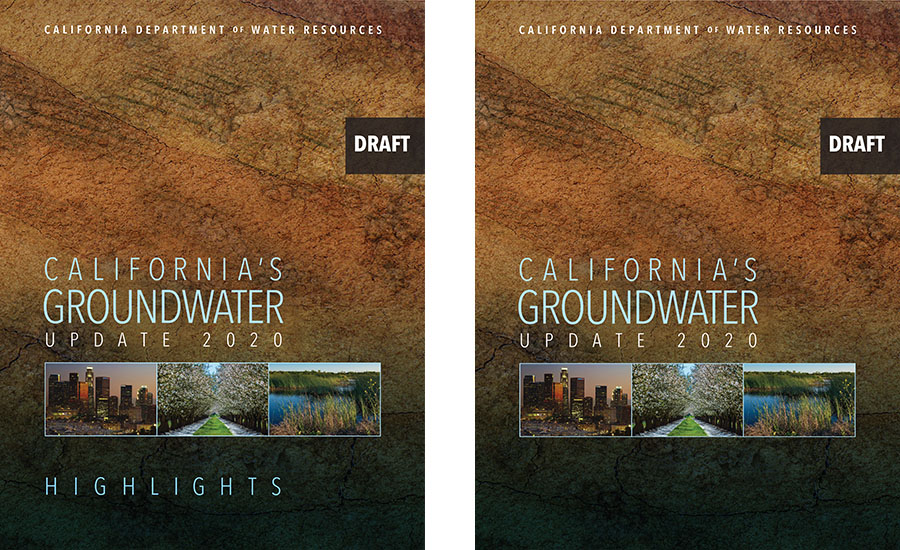Groundwater Awareness Week 2021 comes at a time when we are nearing the end of California’s ‘wet’ season, which has been anything but wet. Runoff in the three major basins of California is at 23 percent and precipitation is at 49 percent of the average for this time of the year. The statewide snowpack, based on snow sensors, is 15.2 inches Snow Water Equivalent (SWE), which corresponds to 54 percent of the April 1 average and 64% of normal for this date. Statewide reservoir storage is beginning to show the impacts of dry conditions, particularly in Shasta Lake and Lake Oroville. The winter to date is reminiscent of Water Year 2014, the third year of California’s most severe drought (2012-2016), since the 1920s to 30s.
Against this backdrop of below average surface water supplies and limited storage, Californians will again turn to groundwater, which has long served as a drought buffer and climate adaptation strategy. The question of the day is how much of a buffer it can provide and for how long, especially in the face of the State’s sustainability and resilience goals.
California’s Reliance on Groundwater is Fraught with Management Challenges
 Source: Draft California’s Groundwater Update 2020 (DWR).
Source: Draft California’s Groundwater Update 2020 (DWR).On March 11, 2021 DWR published the draft California’s Groundwater (CalGW) Update 2020. As CalGW states, “Groundwater is a vital resource in California. It sustains our ecosystems, supports our agriculture, fuels our economy, quenches our thirst, and reduces the impacts from droughts and changing climate.” Groundwater accounts for 41 percent of the state’s average annual water supply but goes up to 58 percent in drought years.
About 83-percent of Californians depend on groundwater for some portion of their water supply. Many communities, particularly in rural areas of California’s Central Valley, are 100 percent reliant on groundwater for all their water needs. During the recent 2012 to 2016 drought, an estimated 3,500 domestic wells in the San Joaquin Valley and hundreds more in the rest of the state went dry leaving households and communities without water.
Increasing reliance and overuse of groundwater, especially during dry periods, have resulted in critical overdraft conditions in 21 basins that cover about one fifth of the total groundwater basin area of the state and accounts for close to two-thirds of the state’s average annual groundwater use. Groundwater quality degradation in many parts of California has put some of state’s most vulnerable populations at risk. The lowering of groundwater levels over the past decades has caused land subsidence, which has damaged and continues to impair critical infrastructure in several parts of the state. Some coastal aquifers have built safeguards, and will need more, against increased sea water intrusion from groundwater levels decline and sea level rise. Stream depletions due to excessive groundwater pumping poses a serious threat to the state’s goal of protection and enhancement of natural ecosystems.
The State is at a crossroad, entrusted with a historic responsibility to uphold the human right to water as well as assist, guide, and support local agencies and stakeholder community in implementing the provisions of the Sustainable Groundwater Management Act (SGMA) as well as the actions and recommendation identified in the Governor’s Water Resilience Portfolio.
Hydrologic Models and Groundwater Sustainability Plans Foster Sustainable Groundwater Management
With statewide sustainable groundwater management efforts in an early stage, groundwater sustainability agencies (GSA) and other local water agencies are now gaining better knowledge and a deeper understanding of hydrogeologic characteristics and conditions of our groundwater basins through increased monitoring, data analysis, hydrologic modeling, alternatives evaluation, and early implementation of management actions. In order to provide support to groundwater sustainability agencies and regions taking on the challenge of sustainable groundwater management, Woodard & Curran has not only been working with local agencies in development of tools and groundwater sustainability plans (GSP), but also been working with DWR to develop key guidance documents and modeling tools that can be used by local agencies for groundwater management.
Water Budget is Key to Track Progress Towards Sustainability
 No one can predict when the next drought will occur, but we can take an important step to better prepare for it by developing a comprehensive water budget for our groundwater basins with due considerations for future demands and climate change scenarios. To support local efforts to improve groundwater sustainability, the California Department of Water Resources (DWR) published a state-of-the-art manual on water budget, entitled “Draft Handbook for Water Budget Development – With or Without Model” (co-authored by Woodard & Curran). This draft handbook includes several innovations in water budgeting, such as systems-based end-to-end water accounting framework, water budget development decision tree, and standardized water accounting template. The draft handbook is a comprehensive technical reference that systematically presents existing information on various methods and data sources for developing water budgets. It can help local agencies in the development of water budgets for any geographic area and time period, using either a modeling or a non-modeling approach.
No one can predict when the next drought will occur, but we can take an important step to better prepare for it by developing a comprehensive water budget for our groundwater basins with due considerations for future demands and climate change scenarios. To support local efforts to improve groundwater sustainability, the California Department of Water Resources (DWR) published a state-of-the-art manual on water budget, entitled “Draft Handbook for Water Budget Development – With or Without Model” (co-authored by Woodard & Curran). This draft handbook includes several innovations in water budgeting, such as systems-based end-to-end water accounting framework, water budget development decision tree, and standardized water accounting template. The draft handbook is a comprehensive technical reference that systematically presents existing information on various methods and data sources for developing water budgets. It can help local agencies in the development of water budgets for any geographic area and time period, using either a modeling or a non-modeling approach.
California’s Groundwater Update 2020 (Bulletin 118) Provides Valuable Data and Analysis to Promote Informed Planning and Decision Making
Robust data and information on statewide groundwater resources can never be more important than now in the face of an impending drought, the risks to human right to water, the Governor’s vision of long-term water resiliency, and the legislative priority on sustainable groundwater management.
 California’s Groundwater Update 2020, also known as DWR Bulletin 118, is the State’s most up-to-date compendium of statewide data and information on the occurrence, nature, use, and conditions of California’s groundwater resources and its management. It provides statewide groundwater related data and analysis that have not been summarized and published since the last update 17 years ago in 2003. The draft CalGW Update 2020, developed by DWR with the technical support of Woodard & Curran, has a very different look from that of Update 2003 and includes new materials such as economic value of groundwater and water market. The draft CalGW consists of a Highlights and a detailed Statewide Report, supported by a series of appendices. The purpose of the draft CalGW is to provide an updated inventory and analysis of the statewide groundwater conditions, monitoring, use, and management as well as identify recommendations charting a path forward towards sustainable groundwater management of groundwater. According to the draft CalGW, “Effective statewide groundwater management is vital to ensuring that the State’s future water supply is reliable and continues to be resilient.” It is expected that CalGW will help locals better understand the value, importance, and availability of groundwater and need for collaboration with neighboring water agencies as well as with underrepresented communities and tribes.
California’s Groundwater Update 2020, also known as DWR Bulletin 118, is the State’s most up-to-date compendium of statewide data and information on the occurrence, nature, use, and conditions of California’s groundwater resources and its management. It provides statewide groundwater related data and analysis that have not been summarized and published since the last update 17 years ago in 2003. The draft CalGW Update 2020, developed by DWR with the technical support of Woodard & Curran, has a very different look from that of Update 2003 and includes new materials such as economic value of groundwater and water market. The draft CalGW consists of a Highlights and a detailed Statewide Report, supported by a series of appendices. The purpose of the draft CalGW is to provide an updated inventory and analysis of the statewide groundwater conditions, monitoring, use, and management as well as identify recommendations charting a path forward towards sustainable groundwater management of groundwater. According to the draft CalGW, “Effective statewide groundwater management is vital to ensuring that the State’s future water supply is reliable and continues to be resilient.” It is expected that CalGW will help locals better understand the value, importance, and availability of groundwater and need for collaboration with neighboring water agencies as well as with underrepresented communities and tribes.
